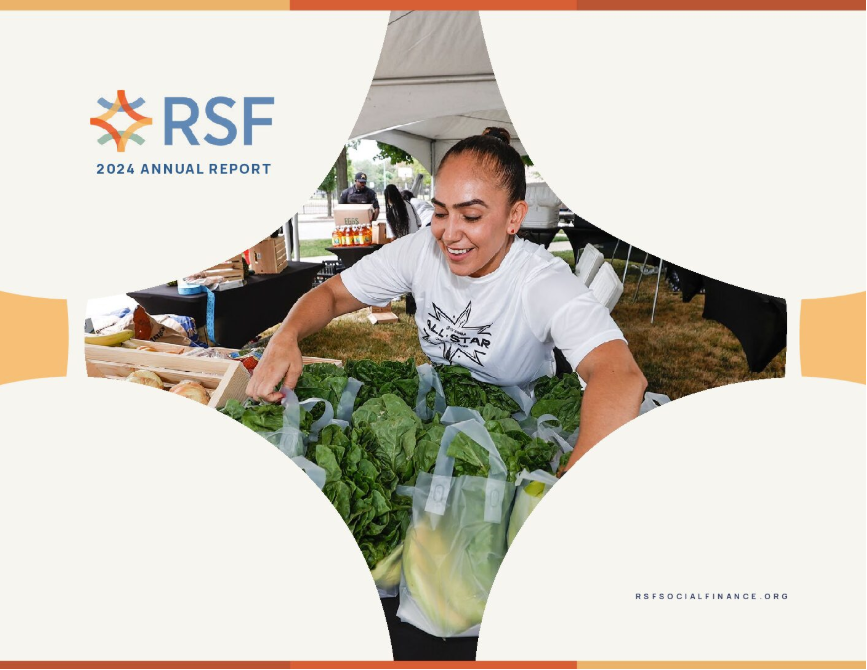As the founder and executive artistic director for the Bishop Arts Theatre Center (BATC) in Dallas, Texas, I experience racism, sexism, and classism almost daily. It’s no secret that racial and gender disparity is a chronic problem for women in leadership at arts institutions in the United States, but for women of color, there is a severe, unconscious level of prejudice.
I’m so grateful for the 2016 study on women artistic and managing directors in the League of Resident Theatres (LORT), commissioned by American Conservatory Theater. It not only gave me the lexicon to talk intelligently about the issues I was experiencing, but, more importantly, it made me feel less like a martyr.
The study found zero women of color as executive directors in LORT, the largest professional theatre association in the United States, and only one woman of color as an artistic director. This is a dismal reality for women like me who are founders of their own theatre company, hoping to transition to jobs at LORT theatres in the future. The ugly truth, which was revealed in the study, is that “hidden behind a gender- and race-neutral job description is an expectation, grounded in a stereotype, of what a theatre leader needs to look like: white and male.”
White men are the long-standing majority of those in top positions, which translates to who funders trust to provide financial resources, who the media decides to give a platform to, and who board members select to lead their organizations. Many female leaders experience deeply entrenched inequalities and are pushed away from economically viable opportunities; by and large, women of color are not looked upon as masterminds or artistic leaders in the field.
Last year I attended Theatre Communications Group’s (TCG) Fall Forum on Governance in New York City. While I knew white men were the dominant culture for artistic directors in the industry, the affinity group breakout sessions made it crystal clear—in the one made up of tenured founding artistic directors of twenty-plus years, I was the only woman of color. Throughout the forum, it was refreshing to learn that TCG was creating much-needed dialogue about issues never discussed before and asking bold questions about what leadership should look like in our field. But it was discouraging to hear many attendees lament that the same conversation has been happening for years. It’s apparent very little progress has been made.
In November 2016, just days after Donald Trump was elected, I attended the Facing Race conference in Atlanta. We had all arrived depleted, in a state of disbelief. Roxane Gay, best-selling author and recent Guggenheim Fellowship award recipient, outed white women who had voted for Trump. It was there many of us learned that, despite Trump having been caught on tape boasting about sexual assault, more than 53 percent of white women voted for him. Most attendees wondered how a sexual predator could have been elected as our commander-in-chief. It was an honest question that we all wanted answered.
At the end of the conference, we collectively agreed to forge ahead and tackle whatever problems would inevitably arise in the months to come. Our marching orders were to get comfortable having uncomfortable conversations—whether political, professional, or personal. For me, it meant to show up more authentically in my relationships and call out discrimination in any form, whether it’s a staff member who is not accustomed to being led by a woman of color or a colleague who throws rocks and hides their hands.
“Hidden behind a race-neutral job description is an expectation, grounded in a stereotype, of what a theatre leader needs to look like: white and male.”
The BATC has grown from a small community theatre to a multicultural, multidisciplinary resource center for the neighborhood. We offer a full season of theatre performances, jazz concerts, speaker series events, and year-round arts education programs. Property ownership has afforded us the autonomy to diversify our income and sustain our organization independent of government grants, but I was taken aback when a national funder declined a grant application citing disapproval of our multidisciplinary programming. Places like the Public Theatre and the Denver Center for the Performing Arts are lauded for the innovative use of their spaces. How is the BATC different? I couldn’t help but recall Janelle Monáe’s line in the movie Hidden Figures: “Every time we have a chance to get ahead, they move the finish line.”

Nonprofits led by women of color are judged by unrealistic standards set by funders who fashion themselves as allies. On occasions, I’ve had the good fortune of recruiting and securing former trustees from regional theatre to join our board. Their expectation is always to raise the same level of funding as they had in other positions, but the reality is that small to mid-size theatre companies, like mine, and particularly theatres led by women of color, have very few million-dollar donors in their Rolodex compared to regional theatres. In addition, the allocation of funds from corporate and wealthy private-sector donors is hugely skewed. I have found that while a funder might grant the BATC a $5,000 gift, he will fund a larger institution at a disproportionately higher level. It is a deeply entrenched racial and (in my case) gender imbalance strategically designed to keep women of color away from economically viable resources and under the radar.
In 2015, our theatre was invited along with five other organizations by the Embrey Family Foundation (EFF) to participate in an RSF Social Finance Shared Gifting Circle. EFF is a small family foundation in Dallas that supports groundbreaking socially conscious projects centered around racial and gender inequalities. The gifting circle was a revolutionary grant-making process where six selected nonprofits distributed $60,000 in funds among each other. Each organization was guaranteed a minimum of $2,000.
Although this was a new approach to grant making for our organization, I learned the concept has been around for over a decade. RSF’s model of shared gifting gives full decision-making authority to a group of grantees who evaluate each other’s proposals and make funding decisions together with transparency. Here’s how it works: The funder decides how much the participating organizations will share and distribute. A meeting date is established and each group is asked to submit a proposal for operating support or an upcoming project, which is reviewed by the participants prior to the meeting. On the meeting date, participants share personal stories and organizational biographies. There is an open discussion about each proposal and each representative determines how much to grant the other nonprofits. The process is designed to be simple and logical from an economic perspective and socially constructive from a community-building perspective. In an innovative and unusual twist on traditional grant making, participants are both grant recipients and grantors to each other.
Our organization walked away with a $10,000 grant that year—not a bad day’s work, right? But what was even more empowering was that I was able to gift thousands of dollars to a different arts group led by another woman of color—and she did the same for my organization in return. We had been in the trenches together, doing great work under the radar for a long time, and it gave us both a personal sense of satisfaction to reward the other’s organization. In 2016, I had the pleasure of co-facilitating a shared gifting circle for EFF that was made up of all women. And this month, I’m the lead facilitator for 2018 cohort, which will mostly include women of color artistic leaders.
The shared gifting circles are cathartic in many ways for minority female artistic leaders. We learn that until we talk to each other and affirm that our experiences are the same, we can’t fully support each other. Oftentimes we are pitted against each other, but with shared gifting competition becomes collaboration.
“Nonprofits led by women of color are judged by unrealistic standards set by funders who fashion themselves as allies.”
Hillary Clinton’s book What Happened should be required reading for any young woman interested in a leadership position in any field. The chapter on sisterhood had me bearing witness, out loud, like a congregant at a tent revival down a country road in rural Georgia. In it, Clinton recounts a conversation with Sheryl Sandberg, the chief operating officer of Facebook: “The more successful a man is, the more people like him. With women, it’s the exact opposite. The more professionally successful we are, the less people like us.” Women leaders, particularly women of color, suffer implacable hostility.
I am a member of a professional women’s group in Dallas called It’s Lonely at the Top, which is made up of executive directors in the Dallas/Ft. Worth area. I’m the only woman in theatre and only one of two women of color in the group, and I’ve found that while I share many similar concerns as the other women, my experiences as a leader are unique. Women of color struggle with disparities in funding, media attention, and recognition compared to our white male and female counterparts. Implicit bias is layered and complex, and, while it might be subtle to others, women of color know when we are being discriminated against. I’ve experienced first-hand being pushed to the margins in ways that should have been crippling.
There is a cadre of impressive young theatre practitioners, many of whom are women of color, being trained to be leaders in the field. At TCG’s Fall Forum last year, I was impressed with panelist members from artEquity, a dynamic organization that seeks to build practical and analytical skills necessary to address diversity and inclusion issues at an interpersonal, group, and organizational level. One of the most salient points made was that there must be a major paradigm shift in the industry if these young innovators would even consider leading arts institutions—currently, they are reticent because they feel there is not enough meaningful effort being made to dismantle systemic racism. Moreover, these young people want to see more than lip service. No one wants to be set up for failure. The industry has been talking about dismantling racism and systems of oppression for fifty years, but the reality is that change is slow. Female artistic leaders must be given leeway to experiment and fail and explore again without public shame. There must be the same financial investment in women of color as there have been in our white male counterparts.
Unconscious bias is layered, and when left unchecked it rears its ugly head in subtle ways that is oblivious to most people. White supremacy maintains its power in liberal advocates who are touted as progressives but who unconsciously discriminate against minorities and women of color on a daily basis. But I have always been an incorrigible optimist; it is a mindset that has helped me overcome seemingly insurmountable odds and left detractors befuddled. Indeed, a new day is on the horizon, and I am joining the legions of women and men to help usher it in.
This piece was originally published on howlround.com.


